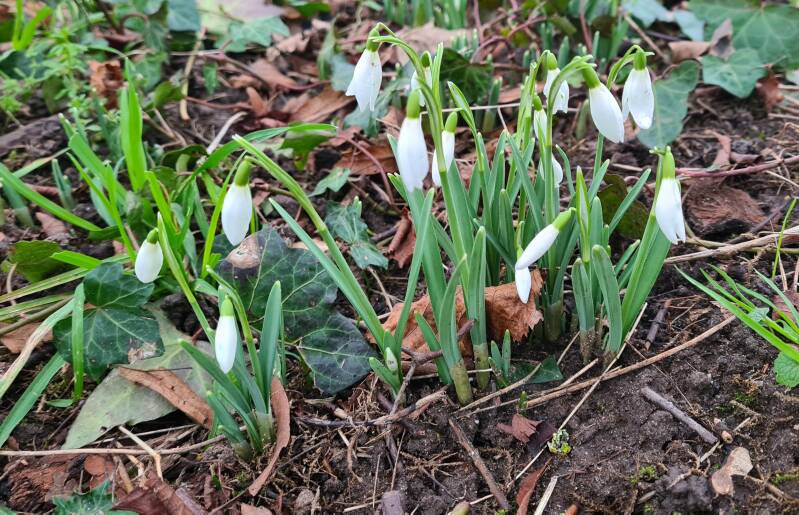
It's impossible to think of the January garden without thinking about the common snowdrop - Galanthus nivalis. These are the first group to grace my garden and not only do they give us cheer in the depths of winter, they provide an important early source of nectar and pollen for bees at a time when there is so little available. They are the highlight of many public gardens at this time of year, so make sure you go out and find some and you'll be amazed by how many varieties there are. I learned recently that snowdrop seeds are dispersed by ants attracted to the oil-rich structure called elaiosome which surrounds the seeds. They take the seeds back to their nests, eat the elaiosome and discard the seeds so helping to distribute them. As gardeners we commonly propagate snowdrops by lifting and dividing clumps in March or April after they've flowered and as the foliage turns yellow - which may seem slightly at odds with saying this is when they're "in the green". You can split the clumps into smaller clusters but try to create as little disturbance to the bulbs as possible. Horticulturalists may also propagate using the more advanced techniques of chipping or twin-scaling (ask google!) because this should produce more new plants in a shorter amount of time. Could be something to try if you're a serious or budding Galanthophile?


Create Your Own Website With Webador